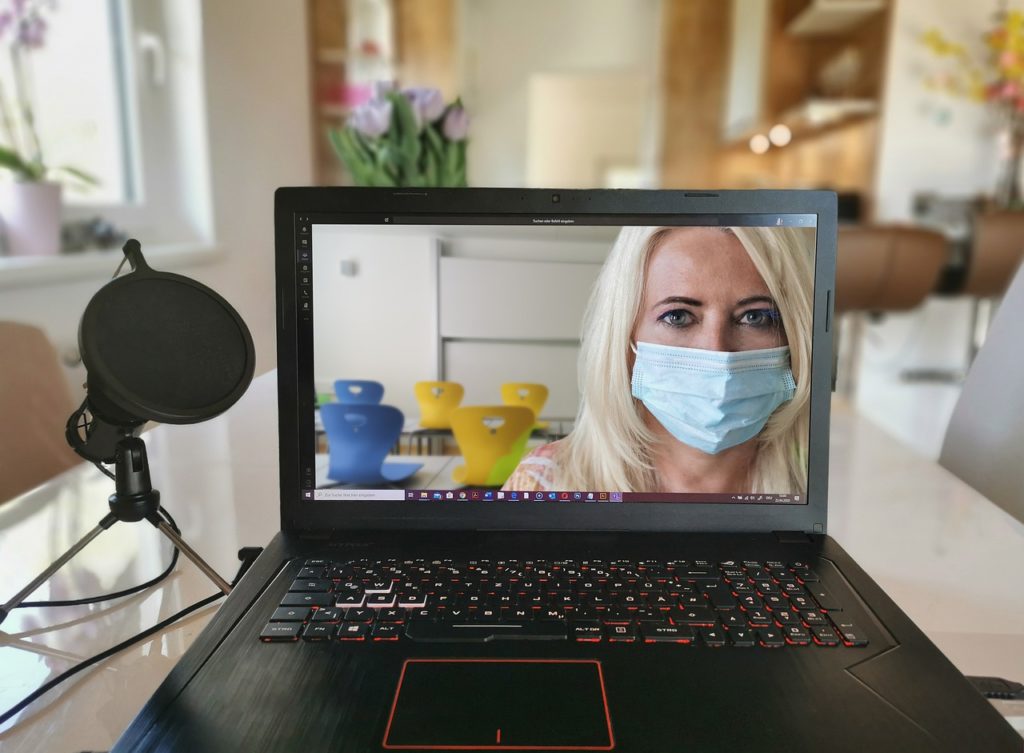Par Fatimazzahra Benchekri
Quels sont les avantages de la comodalité? Quelles nuances est-il judicieux de prendre en considération lorsqu’on choisit ce format d’enseignement? Comment le vivre? Trois spécialistes de l’éducation ont échangé sur le sujet lors d’un panel de discussion présenté à l’occasion de la Semaine de la formation à distance, en février 2022.
Lors du panel La comodalité : une combinaison unique de présence et de distance, Serge Gérin-lajoie, professeur à l’Université TÉLUQ et spécialiste en formation à distance, en formation en ligne et en enseignement supérieur, Normand Roy, professeur au département de psychopédagogie et d’andragogie à l’Université de Montréal et France Lafleur, professeure au département des sciences de l’éducation de l’université du Québec à Trois-Rivières, ont discuté librement de comodalité, une façon d’enseigner qui a gagné en popularité au cours des deux dernières années.
Qu’est-ce que la comodalité?
Selon l’Office québécois de la langue française, la comodalité désigne un enseignement ou une formation qui combine simultanément des modes en présentiel et à distance. Les deux modes se déroulent en même temps et les étudiants à distance ont la possibilité d’interagir en direct avec l’enseignant et les autres étudiants.
Pour rappel, il existe jusqu’à maintenant quatre types de formation principaux : la formation en présence, à distance, hybride et comodale.
L’enseignement comodal présente des défis aussi bien techniques que pédagogiques. Cependant, la comodalité présente également des avantages qui profitent aux étudiants et aux enseignant(e)s, mais aussi aux établissements. Il permet notamment d’assurer une continuité pédagogique pour ces étudiant(e)s qui sont dans l’impossibilité de se présenter en classe, que ce soit pour des raisons de santé, de conditions météorologiques ou autres.
Quels sont les avantages de la comodalité?
La comodalité permet principalement de faire vivre des expériences plus individualisées en fonction des besoins des étudiants. Pour les étudiants universitaires, la conciliation vie de famille, travail et études est facilité. L’économie de temps que les étudiants arrivent à faire en évitant les heures de transport serait l’un des principaux avantages.
France Lafleur affirme d’ailleurs que, depuis la démocratisation de la comodalité (principalement liée à la pandémie), le taux d’inscription à temps plein a augmenté dans les universités québécoises. Ce n’est pas pour rien que l’offre de cours à distance atteint des sommets, comme c’est le cas à l’Université du Québec à Montréal, tel que le rapportait récemment le quotidien Le Devoir.
Du côté des enseignants, la comodalité apparaît comme un nouvel outil de rétroaction, qui permet d’établir et de garder un lien avec les étudiants à distance, alors que plusieurs fonctionnalités technologiques sont à disposition. Ceux-ci donneraient à la comodalité un aspect interactif qui est, dans certains cas, absent même lors des cours en présentiel. France Lafleur parle de l’interactivité comme du « diamant de la formation à distance ».
Pour les établissements d’enseignement, la comodalité permet de cibler une clientèle variée et diverse, parfois située dans des zones géographiques lointaines (villes, régions, ou même pays).
Même pour les plus jeunes
Les panélistes n’ont pas qu’abordé le cas des étudiants universitaires. Ils ont aussi mentionné que, pour certains jeunes de niveaux primaire et secondaire, surtout ceux ayant des besoins particuliers ou d’autres conditions de santé (anxiété, santé mentale, parcours atypique, etc.), l’enseignement comodal peut s’avérer pertinent, utile et porteur.
De fait, il permet à ces jeunes de suivre le cours en direct, comme leurs autres camarades, tout étant physiquement dans une zone de confort (leur maison). Ainsi, la comodalité répondrait à la multiplication des parcours chez les jeunes.
Cohérence pédagonumérique
Pendant le webinaire, les modalités pour renforcer la cohérence pédagonumérique en formation à distance ont été évoquées à travers une recherche-action-formation. Les modalités se déclinent comme suit :
- Rendre accessible les ressources technologiques et numériques tant aux apprenants qu’aux enseignants.
- Utiliser un environnement numérique d’apprentissage afin de centraliser les pratiques des enseignants.
- Placer l’apprenant au cœur des réflexions, des choix et des décisions dans l’acte d’enseigner en comodalité.
De plus, ce lien étroit entre pédagogie et numérique donne une cohérence pédagonumérique où 4 éléments sont en perpétuelle interaction :
- Les modalités de la FAD
- Les stratégies d’enseignement
- Les cibles d’apprentissage
- Les activités d’évaluation
Tout en mettant en place ces pratiques, il faut néanmoins s’assurer que la distance n’altérera en rien la qualité d’un cours et, au contraire, facilitera sa déclinaison. De plus, la gestion du matériel est d’une importance cruciale lors de l’utilisation d’outils technologiques et est donc à prendre au sérieux et à vérifier constamment pour s’assurer du bon fonctionnement pour tous.
Le panel de discussion peut être revisionné ici : La comodalité : une combinaison unique de présence et de distance.
Ressources complémentaires :
- Cours autoportant sur l’enseignement comodal offert par MEQ-UQTR
- Wiki-FAD : outils numériques pour former, enseigner ou apprendre
- Rapport de recherche MEQ-UQTR par France Lafleur : Pratiques émergentes à privilégier en contexte d’enseignement comodal
- Collection PUQ : Formation à distance | Distance Learning
- Programme court de 2e cycle en formation à distance (FAD) à l’UQTR par France Lafleur






